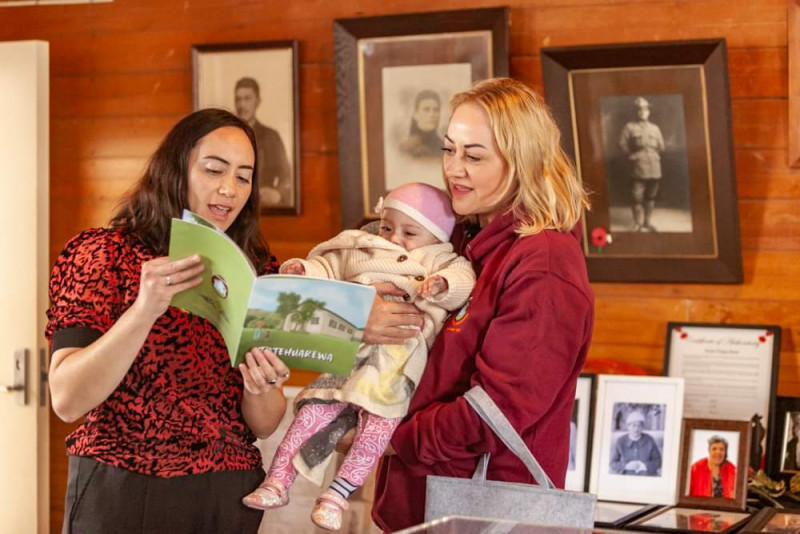Tūtehuarewa: a tipuna, a whare, and now a book

A special reo Māori pēpi book that showcases Ngāi Tahu hākui, Tūtehuarewa, is ensuring her name endures for current and future mokopuna of Koukourarata (Port Levy) on Banks Peninsula in Te Waipounamu.
The book was written by Pirimia Burger and illustrated by Kewa Waimālie Rūpene, both from Koukourarata. It came to fruition after whānau-owned company Aropapaki Ltd applied for funding on behalf of Koukourarata for a series of kaupapa reo.
With investment support from Te Mātāwai, the book was published for the centennial celebration of the Hall, Tūtehuarewa, named after the ancestress.
Pirimia says creating reo Māori resources like this is a powerful way to reconnect with whānau, celebrate identity, share mātauranga and encourage te reo.
“This pukapuka continues the centuries old Polynesian style of storytelling in which people and objects are described in the same way. Tūtehuarewa the woman was a protector of children, a shelter and an icon. All of these qualities also describe our whare.
“Our pukapuka is hapū specific. The kōrero uses our mita, the illustrations capture our places, and the characters show the diversity of our people, right through to our blonde-haired, blue-eyed babies.” Pirimia says.
In April last year, hundreds of Ngāi Tūtehuarewa, Ngāi Tūhaitara and Ngāti Huikai descendants returned to Koukourarata from as far as Australia, to celebrate the 100th birthday of their whare whakaruruhau. Here, the book was gifted to whānau.
Much like its namesake, Tūtehuarewa Hall has been a haven for whānau over generations, a sentiment recounted in this book. Director of Arapapaki Ltd, Karuna Thurlow, shares that the hapū wanted to honour their tipuna in a special way.
“It’s a story that tells us who we are. Tūtehuarewa is really key to our identity as a hapū and how we should be as wāhine in the world,” Karuna says.
The book has been a genuine success with the hapū currently printing further copies after an abundance of requests from whānau in Aotearoa and Australia.
